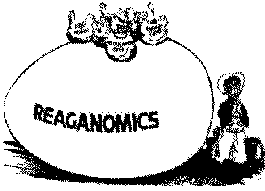From Short Run to Long Run
- When changes occur in the short run they result in either increased or decreased producer profits – not changes in wages paid
- In the long run increases in AD result in a higher price level, as in the short run, but as workers demand more money the AS curve shifts left to equate to production in the original output level, but now at a higher price
- In the long run, the AS curve is vertical at the natural rate of unemployment (NRU), or full employment (FE) level of output. Everyone who wants a job has one and no one is enticed into or out of the market
- Demand-pull inflation: results when an increase in demand shifts the AD curve to the right, temporarily increasing output while raising prices
- Cost-push inflation: results when an increase in input costs that shifts the AS curve to the left. In this case the price level increase is not in response to the increase in AD, but instead the cause of price level increasing
The Philips Curve
- Relationship between unemployment and inflation
- The trade off between inflation and unemployment occurs over the short run
- Each point on the Philips curve corresponds to a different level of output.
Long Run Philips Curve (LRPC)
- Occurs at the natural rate of unemployment (NRU)
- Represented by a vertical line
- The natural rate and fewer worker benefits create a lower NRU
- The economy produces at the full employment output level
- The nominal wages of workers fully incorporate any changes in price level as wages adjust to inflation over the long-term
LRPC only shifts if the LRAS curve shifts
- Determinants for LRAS is the same for LRPC
- Increase in unemployment it will shift LRPC to the right
- Decreases in unemployment will cause LRPC to shift left
If natural rate if NRU changes, LRPC moves
- 3 types of NRU
- Frictional, structural, seasonal
- Assumed to be stable in the short run because the SRAS is stable
- Increase in AD causes the SRPC to shift up/left along the curve.
- Decrease in AD SRPC shits downward along the curve
Supply shocks – rapid and significant increases in
resource costs which causes SRAS curve to shift, thus producing a corresponding shift in the SRPC
- Ex: price of oil
Misery index - combination of inflation and unemployment in any given year
- Single digit misery is good
Stagflation – occurs when high unemployment and high inflation
occur at the same time
Disinflation – inflation decreases overtime
- Support policies that promote GDP growth by arguing that high marginal tax rates along with the current system of transfer payment (employment compensation or social securities) provide disincentives to work, invest, innovate, and undertake entrepreneurial ventures
- Tend believe that the AS curve shifts to the right, thus creating the trickle down effect
- Believed the rich get their's first
Marginal Tax Rate
- Amount paid on the last dollar earned or on each additional dollar earned.
- Reducing marginal tax rates, supply side economists believe it will encoure more people to work longer, forgoing leisure time for extra income
Criticism of Laffer Curve
- Where the economy is actually located on the curve is difficult to determine
- Tax cuts also increase demand which can fuel inflation
- Empirical evidence suggest that the impact of tax rates on inentives to work, invest, and save are small








